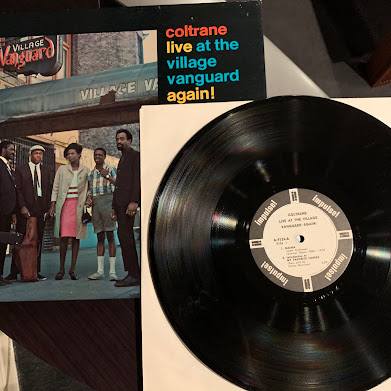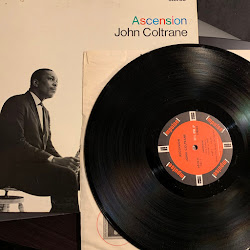In 1974 the son of one of my father’s friends stayed at our house in Denver on a drive from New York to California. He was a music student and only liked classical and jazz. Much of the weekend was spent with me saying “What about The Rolling Stones?” “What about Yes?” He would invariably reply “crap!” Exasperated, I finally asked him if he thought any rock and roll was good. He thought for a minute - then pronounced, “Springsteen.” He told me that he had seen Springsteen in a club in New York and that his band provided the greatest show our friend had ever seen. He said, “That band can do anything, and Springsteen is a true bandleader.” I had heard a handful of Springsteen’s songs on the radio - “Spirit in the Night,” “For You,” “Blinded by the Light,” etc. I liked him, but had not considered him one of the greats. Within a year that would all change.
I remember walking into Budget Tapes and Records on Colorado Blvd. and seeing the cover. Born to Run changed my world. Starting with the image on the cover-that beautiful photo symbolizing both rock idealism and racial détente. It was a startling cover. Then when I got the record home, every song exploded out of the speakers with the kind of excitement that the big hits of the mid-60’s conveyed. Yearning, youthful enthusiasm, the restless belief that there was something special for me out there - if I could just break out. Born to Run tapped into my dreams in a big way. It provided a road map for emotional growth, and offered courage in the face of an uncaring adult world. Not only did I love every song, but it drove me back to his first two albums and I found those to be filled with a treasure chest of amazing songs. Bruce was quickly becoming one of my favorites.
Fast forward to 1978. It’s the end of my first year of college. Springsteen has released a follow-up to Born to Run called Darkness on the Edge of Town and it is just as good as the first three albums. This guy is on a roll! Then, The Denver Post includes the concert schedule for the summer, and there on June 20th was Bruce Springsteen and The E Street Band at Red Rocks - no opening act. Oh man was I excited. I had no idea how important this night would be to me going forward. It turned out to be one of the great concert experiences of my life. For three hours the band gave voice to every fear, desire and aspiration I had experienced in my 19 years. Total rock and roll abandon. Soaring anthems, street poetry, balzout rockers - Springsteen delivered it all, ending his show with joyous covers of "I Fought the Law" and “Quarter To Three.” It was one of those formative nights you never forget. I walked out of Red Rocks with my head swimming. The next day everything seemed more alive yet less exciting. I had been charged like a battery and wanted more.
I continued to see Springsteen every time he came to Colorado - more nights at Red Rocks, multiple shows at McNichols Arena, even the stadium. He never disappointed live, even though I felt like none of the following albums quite matched up to the first four. Life moved on.
Then 9/11 happened and everybody in the sane world was wounded. I felt like I couldn’t get over it, or get in touch with my feelings. Finally, nine months later, Springsteen released The Rising which was one of the first major works of art to deal with the tragedy in a grown-up way. Bruce was back for me. It was exhilarating to rediscover him, to familiarize myself with all the albums he had released and to feast on all his great songs. And live - he had lost nothing. Now in his 40’s, Springsteen had matured into a thoughtful writer and parent, but on stage he was still a youthful tornado. His shows have remained, to this day, marathon forces of nature. There is no performer who gives more to his audience night after night than Springsteen.


More highlights of my Springsteen career came a couple of years ago when The Boss came to The Tattered Cover to sign his autobiography. I stood in line for 4 hours like a real fan boy to shake his hand and get a signed book. Believe it or not, it was worth it. When I finally got to the front of the line and saw this guy I had loved for so long, and there he was, small, fragile, human, smiling, hand outstretched, it really meant something to me. A few months later, Jill and I went to New York to see Springsteen on Broadway. For a year, Springsteen took to the small stage and gave audiences a rare opportunity to spend an intimate evening with the man. He was again very human and fragile. It wasn’t the huge, stadium-sized fist-pumping fun of his regular concerts. This was being in the room with an introspective middle-aged man taking stock of his life. It was brilliant. I couldn’t imagine another artist of his stature opening himself up so honestly.


Collecting Springsteen has also been fun. I’ve managed to get some really cool stuff over the years - no item bigger or better than the marquee from the Capitol Theatre for his 29th birthday shows in September of 1978. I got it from a customer and ultimate Springsteen fan named Elliott. It has garnered a lot of attention, and I look at it with pride every day when I’m in the store. Then there’s the autographed guitar that sits next to the marquee - it came from legendary promoter Barry Fey’s collection. Like Dylan, like The Beatles, like The Stones and a few others, Bruce Springsteen rises above for me. His songs have illustrated periods of my life, and his concerts have consistently thrilled beyond reasonable expectation. Last year’s Western Stars album just continued the streak - I thought it was his best album in years. Springsteen is a major chapter in my musical book.
- Paul Epstein




 I have found every period of Zappa’s output to reward repeated
listening. Few artists had as grand a vision that they held on to for an entire
career and actualized to the level of Frank Zappa did. He had fearless
determination in the face of stupid and corrupt labels, a largely indifferent
public, money woes and a never-ending stream of amazing, but undependable
musicians. The sheer number of world-class players who passed through his
various bands is staggering. The best of the best appeared on his records and
on stage. As for Zappa himself, his energy as a composer, arranger, performer,
producer and promoter of his own (and others’) output is almost hard to
believe. It seems, from his pre-teen years onward, Zappa never took a break - not
until his untimely death from prostate cancer in 1993.
I have found every period of Zappa’s output to reward repeated
listening. Few artists had as grand a vision that they held on to for an entire
career and actualized to the level of Frank Zappa did. He had fearless
determination in the face of stupid and corrupt labels, a largely indifferent
public, money woes and a never-ending stream of amazing, but undependable
musicians. The sheer number of world-class players who passed through his
various bands is staggering. The best of the best appeared on his records and
on stage. As for Zappa himself, his energy as a composer, arranger, performer,
producer and promoter of his own (and others’) output is almost hard to
believe. It seems, from his pre-teen years onward, Zappa never took a break - not
until his untimely death from prostate cancer in 1993.



















































